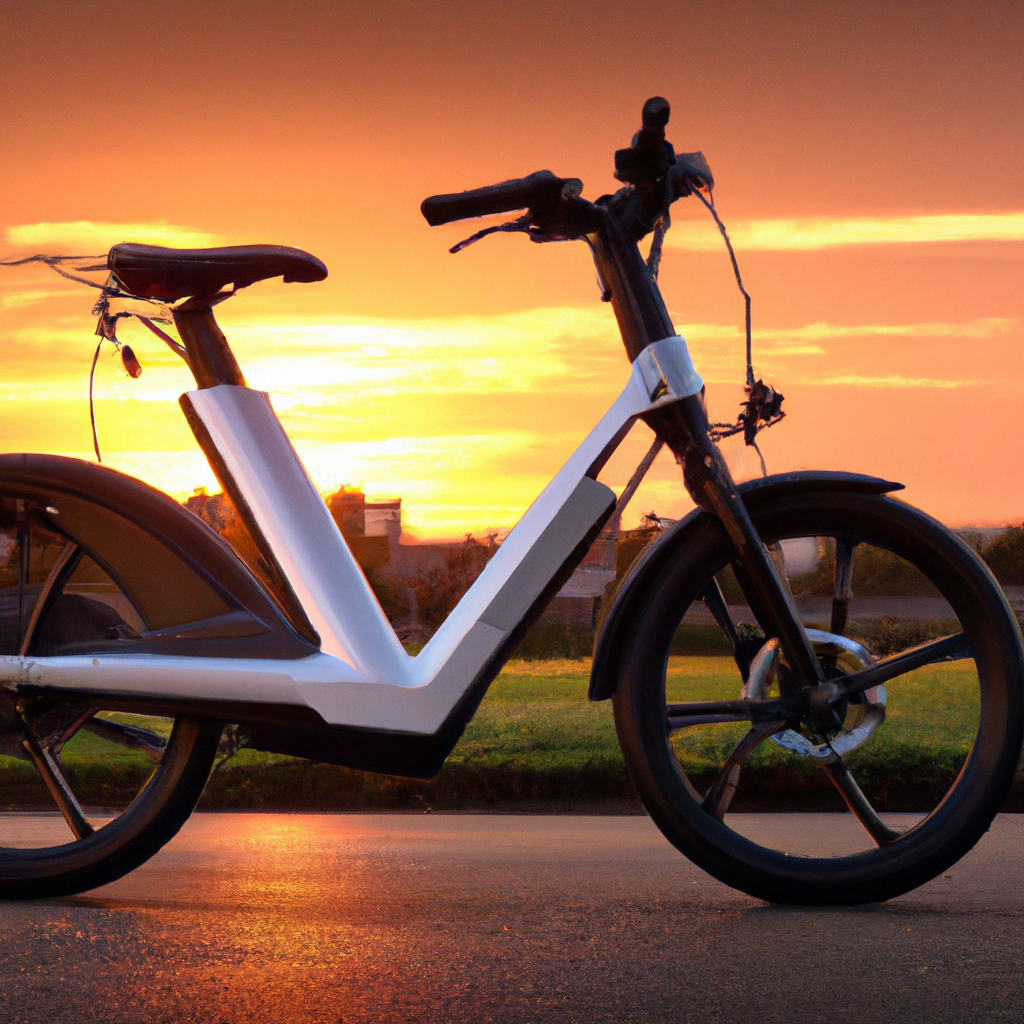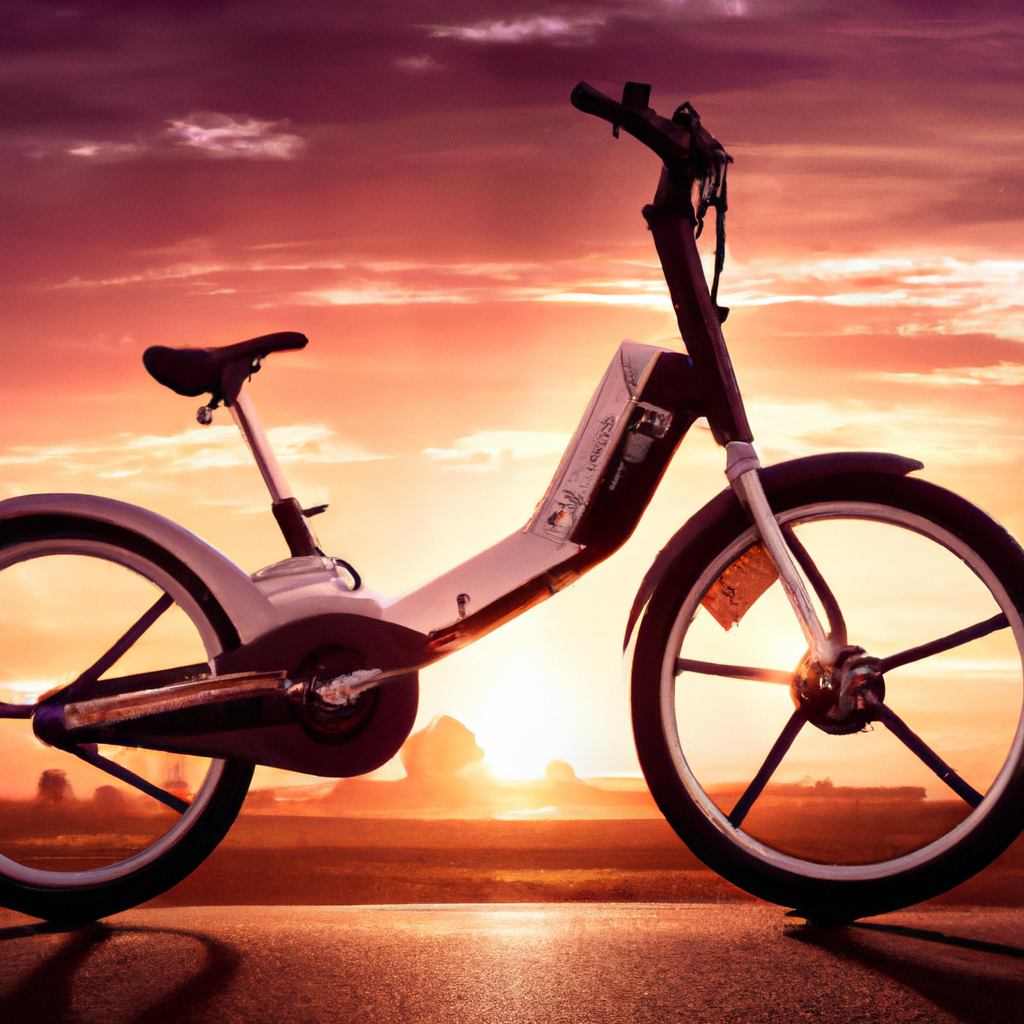If you’re in the market for an electric bike, one of the most important factors to consider is the battery. After all, it’s what powers your bike and determines how far you can go on a single charge. But with so many options out there, how do you choose the right battery for your needs? Don’t worry, we’ve got you covered. In this article, we’ll give you 10 tips to help you select the perfect electric bike battery, ensuring you have an enjoyable and reliable ride every time. So, let’s get started!

Battery Capacity
Understanding battery capacity
Battery capacity refers to the amount of energy that a battery can store and provide to power the electric bike. It is measured in watt-hours (Wh) and indicates how long the battery can last before it needs to be recharged. The higher the battery capacity, the longer you can ride your e-bike without having to recharge.
Determining your range needs
When choosing a battery for your electric bike, it is important to consider your range needs. Range refers to the distance you can travel on a single charge. To determine your range needs, consider factors such as the length of your daily commute, the terrain you will be riding on, and any extra weight you may be carrying. Calculate the estimated range by dividing the battery capacity (in watt-hours) by the average wattage of your e-bike motor.
Consider your usage patterns
To choose the right battery capacity for your electric bike, it is important to consider your usage patterns. Think about how often you will be riding your e-bike and how much time you can dedicate to charging the battery. If you plan on using your e-bike frequently or for long distances, a higher battery capacity will be beneficial. However, if you only plan on using your e-bike occasionally or for shorter rides, a lower battery capacity may suffice.
Voltage
Understanding battery voltage
Battery voltage indicates the level of electrical potential difference between the positive and negative terminals of the battery. In the context of e-bike batteries, it refers to the amount of power that can be delivered to the motor. The higher the battery voltage, the more power your e-bike will have.
Matching voltage to your e-bike motor
It is crucial to ensure that the battery voltage matches the requirements of your e-bike motor. Check the specifications of your motor to determine the recommended voltage range. Using a battery with a voltage too low or too high for your motor can lead to inefficient performance, reduced range, and even damage to your e-bike.
Effects on speed and power
The battery voltage has a direct impact on the speed and power of your e-bike. A higher battery voltage can provide a greater amount of power to the motor, resulting in increased speed and better acceleration. On the other hand, a lower battery voltage may limit the speed and power capabilities of your e-bike. Consider your desired speed and power requirements when choosing the appropriate battery voltage.
Battery Chemistry
Different types of battery chemistries
There are several different types of battery chemistries available for e-bikes, each with its own advantages and disadvantages. The most common types include lithium-ion (Li-ion), lithium iron phosphate (LiFePO4), and nickel-metal hydride (NiMH). Li-ion batteries are popular due to their high energy density and long lifespan, while LiFePO4 batteries offer enhanced safety and durability. NiMH batteries are less common but can be found in some e-bike models.
Comparing advantages and disadvantages
When choosing a battery chemistry for your electric bike, it is important to weigh the advantages and disadvantages of each type. Li-ion batteries, for example, offer high energy density and lighter weight but can be more expensive. LiFePO4 batteries are known for their improved safety features and longer lifespan but may be heavier and bulkier. NiMH batteries are less expensive but have lower energy density and may require more frequent charging.
Considerations for safety and environmental impact
In addition to the performance factors, considering safety and environmental impact is crucial when choosing a battery chemistry for your e-bike. Li-ion batteries can be prone to thermal runaway if not properly handled or maintained, while LiFePO4 batteries are known for their stability. Additionally, lithium-based batteries should be recycled responsibly to minimize their impact on the environment.

Weight and Size
Impact on e-bike’s overall weight
The weight of the battery directly affects the overall weight of your e-bike. A heavier battery can make the e-bike more challenging to maneuver, especially when climbing hills or navigating tight corners. On the other hand, a lighter battery will result in a more agile and responsive ride. Consider your physical capabilities and riding preferences when deciding on the weight of the battery.
Considering the frame’s carrying capacity
When choosing a battery for your e-bike, it is important to consider the carrying capacity of the frame. Different e-bike models have varying weight limits, and exceeding these limits can compromise the integrity of the frame. Ensure that the battery you choose falls within the recommended weight range provided by the manufacturer.
Choosing the right battery size for your e-bike
In addition to weight, the size of the battery is another important consideration. The battery should fit securely within the designated battery compartment of your e-bike without interfering with other components. Measure the available space on your e-bike and choose a battery size that fits properly while providing the desired capacity and voltage.
Charging Time
Understanding charging time
Charging time refers to the amount of time it takes to fully recharge the battery from empty to full capacity. Different batteries have varying charging times depending on their capacity and the charging rate. It is important to consider the charging time when planning your e-bike usage to ensure that the battery will be ready when you need it.
Different charge rates for various batteries
Different batteries have different recommended charging rates, and using an incompatible charger can lead to safety risks or damage to the battery. It is crucial to use the appropriate charger and ensure that it matches the charging requirements of your battery. Follow the manufacturer’s guidelines for charging rate and duration to maintain the optimal performance and lifespan of your battery.
Importance of choosing appropriate chargers
Using an appropriate charger is crucial for the longevity and safety of your e-bike battery. While it may be tempting to use a generic charger or one from a different brand, it is important to use the charger provided by the battery manufacturer or a compatible charger recommended by them. Using an inappropriate charger can result in undercharging, overcharging, or overheating of the battery, which can degrade its performance and lifespan.
Cycle Life
Defining the battery’s cycle life
The cycle life of a battery refers to the number of complete charge and discharge cycles it can undergo before its capacity significantly decreases. Each time you fully charge and fully discharge the battery is counted as one cycle. Understanding the cycle life of a battery is important to determine its long-term durability and the expected lifespan of the battery.
Considering expected battery lifespan
The expected lifespan of a battery depends on various factors, including the battery chemistry, usage patterns, and charging practices. Different battery chemistries have different lifespans, with Li-ion batteries typically lasting between 500 and 1000 cycles. However, proper care and maintenance, such as avoiding extreme temperatures and avoiding deep discharge, can help extend the lifespan of the battery.
Effects of charging and discharging cycles
The number of charging and discharging cycles a battery undergoes can affect its overall capacity and performance. Over time, the battery’s capacity may gradually decrease, leading to reduced range and decreased power output. Understanding the effects of charging and discharging cycles can help you make informed decisions about when to recharge the battery and how to prolong its lifespan.
Compatibility
Checking compatibility with your e-bike
Before purchasing a battery, it is essential to check its compatibility with your e-bike. Different e-bike models may have specific requirements for battery mounts, connectors, and voltage ranges. Check the specifications of your e-bike and ensure that the battery you choose is compatible with the mounting system and connectors. Using an incompatible battery may result in a poor fit or unreliable connections, which can cause safety hazards and damage to the e-bike.
Considering battery mounts and connectors
Battery mounts and connectors play a crucial role in securely attaching the battery to your e-bike and ensuring a reliable electrical connection. Different e-bike models may have different mounting systems and connector types. Verify that the battery you choose has the same mounting style and connector type as your e-bike to ensure a hassle-free installation and optimal performance.
Ensuring easy installation and removal
Another important consideration is the ease of installation and removal of the battery. Some e-bike models have user-friendly designs that allow for quick and tool-free battery installation and removal. Make sure that the battery you choose is easy to install and remove, especially if you plan on frequently removing the battery for charging or storage.
Brand Reputation
Researching reputable e-bike battery brands
When investing in an e-bike battery, it is important to consider the reputation of the brand. Research and choose reputable brands that have a track record of producing high-quality and reliable batteries. Look for brands that specialize in e-bike batteries and have positive reviews from customers.
Looking for customer reviews and feedback
Customer reviews and feedback are valuable sources of information when researching e-bike battery brands. Look for reviews from users who have had first-hand experience with the battery brand you are considering. Pay attention to comments regarding the battery’s performance, lifespan, and customer support to get a well-rounded understanding of the brand’s reputation.
Considering warranty and customer support
Warranty and customer support are important considerations when choosing an e-bike battery brand. A reputable brand will typically offer a warranty that covers manufacturing defects and provides customer support in case of any issues. Check the warranty period and the brand’s customer support services to ensure that you will be adequately supported in the event of any problems or concerns.
Budget
Determining your budget for a battery
Setting a budget for your e-bike battery is an important step in the decision-making process. Batteries come in a wide range of prices, depending on factors such as capacity, chemistry, and brand. Determine how much you are willing to spend on a battery, keeping in mind that a higher quality battery may come with a higher price tag.
Balancing cost and quality
When considering your budget, it is essential to balance cost and quality. While it may be tempting to opt for a cheaper battery to save money, compromising on quality can have long-term consequences. It is often better to invest in a higher quality battery that offers better performance, durability, and safety features, even if it means allocating a larger budget.
Considering long-term savings
Although high-quality batteries may have a higher upfront cost, they can result in long-term savings. A battery with better energy efficiency and longer lifespan will require less frequent replacement, reducing the overall cost in the long run. Consider the cost per cycle and the expected lifespan of the battery to assess its value for money.
Maintenance and Care
Understanding battery care guidelines
Proper maintenance and care are crucial for maximizing the lifespan and performance of your e-bike battery. Familiarize yourself with the specific care guidelines provided by the battery manufacturer. These guidelines may include recommendations for charging, storage, temperature limits, and cleaning. Following the care guidelines will help ensure optimal battery health and longevity.
Proper storage and charging practices
Storing and charging your e-bike battery correctly is essential for maintaining its performance and lifespan. Store the battery in a cool, dry place away from extreme temperatures and moisture. When charging the battery, follow the manufacturer’s recommendations on charge levels and durations to avoid overcharging or undercharging. Adhering to proper storage and charging practices will help prolong the battery’s lifespan.
Monitoring and maintaining battery health
Regularly monitoring and maintaining the health of your e-bike battery is important for identifying any issues early on and ensuring optimal performance. Keep an eye on the battery’s capacity, range, and charging time to assess its health. If you notice any significant changes or abnormalities, such as a sudden decrease in range or a significantly longer charging time, consult the manufacturer or a professional for further guidance. Regularly inspect the battery for any signs of damage or wear, such as bulging or corrosion, and address any issues promptly.

